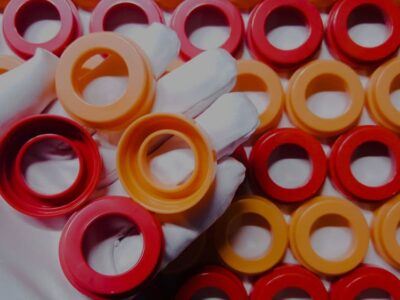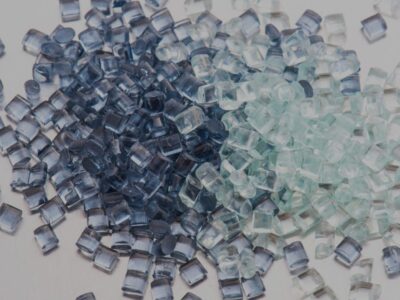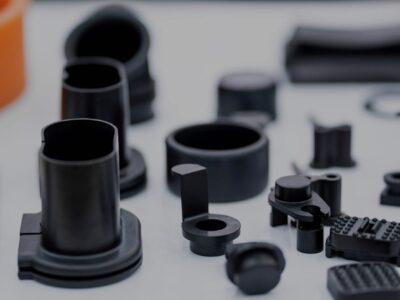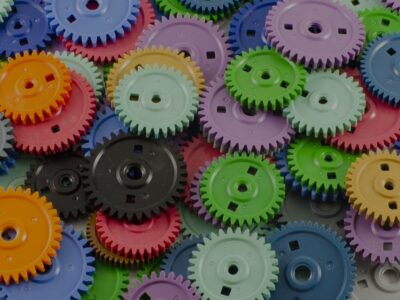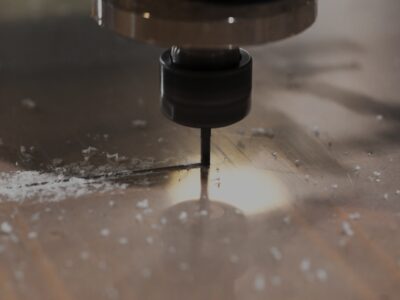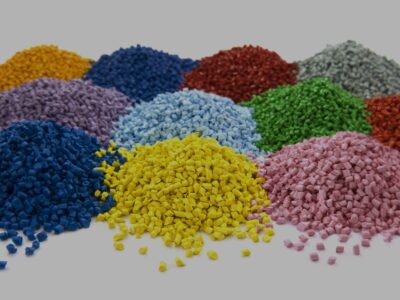Originally published on fastradius.com on May 17, 2021
Injection molding is a simple manufacturing process used to rapidly and consistently produce parts in unique shapes. The process of plastic injection molding begins with heating up thermoplastic pellets. This molten material is then injected into a hardened steel mold through a pressurized nozzle. Once the part is cooled, it is ejected and the process is repeated. Injection molding is one of the most popular manufacturing methods for plastic parts and engineers often use injection molding for high-volume production runs, as this process creates consistent parts quickly while often decreasing costs per part.
While manufacturing plastic components with injection molding, some parts might come out looking and feeling better than others. However, that doesn’t mean you’re stuck with an inferior product. Here are seven cosmetic defects that can occur in plastic injection molding, plus their causes and potential solutions.
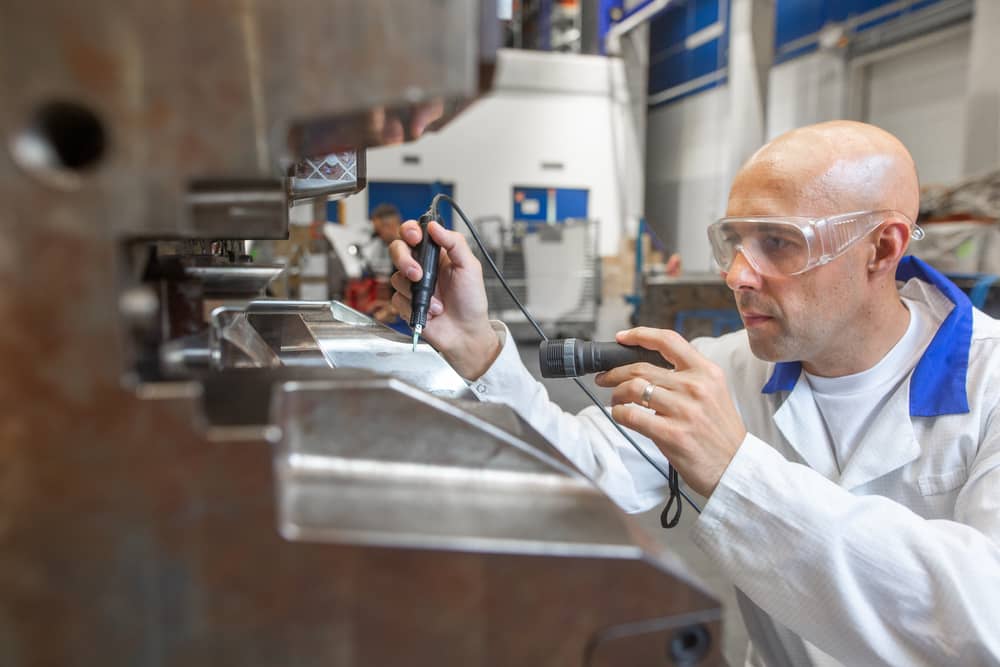
Drag lines
Drag lines, also known as scrape lines, occur when there is not enough draft incorporated into the design of the vertical walls of a part. Vertical walls are the surfaces parallel to the direction of the mold. When there is not enough space for parts to eject properly, the vertical walls scrape against the mold and create unsightly lines.
To best avoid drag, vertical walls should have a draft angle ranging from 1 to 2 degrees. Heavily textured surfaces can require draft angles of 5 degrees or more to prevent drag.
Flash
Flash, also known as “spew,” occurs when molding material flows outside its intended chambers and protrudes over a part’s edge. Flash is usually caused by a worn-down or poorly-designed mold, as well as excessively high injection pressure or mold temperature. Unlike a parting line, which shows the seams on an injection molded part, flash is a quite noticeable and unsightly defect.
You can fix a one-time flash occurrence by simply trimming the excess material, but this isn’t recommended for repeat flash occurrences. If you experience flash often when manufacturing plastic parts with injection molding, you should:
- Retool or redesign your injection mold
- Increase plate clamping force to limit the material flow
- Adjust injection pressure, mold temperature, and ventilation
Correctly placing the parting line during design can have a large influence on flash. A manufacturing partner like SyBridge Technologies can provide those DFM (Design for Manufacturing) insights for your part.
Sink marks
A sink mark defect in injection molding appears as a small depression on the surface, similar to a small crater. Sink is primarily caused by thick sections in the injection mold design, which leads to improper cooling times inside the mold. However, sink marks can also stem from low pressure in the injection molding cavity or too-high temperatures at the tool’s gate. One common example of sink is orange peel, which creates a ripple appearance on your part.
You can avoid sink by ensuring your part has the right wall thickness, usually no less than 40 to 60 percent of the part’s thickest section. Sink can also be prevented by lowering mold temperature, raising holding pressure, or increasing holding time to encourage proper cooling.
Swirling
Plastic parts are often dyed with colored resin pellets, which are mixed with the molten injection molding material immediately before the molding run. However, if the colors don’t mix with the molten material successfully, swirling occurs. Not only does swirling affect the consistency of a part’s color, but it also creates color inconsistencies between different parts in the same production run.
Swirling can increase depending on the material you use, and the texture or polish of injection molding tools. To prevent swirling, perform tests whenever possible and use pre-compounded resin to ensure identical color match across parts.
Knit lines
Knit lines, also known as weld lines, are fine lines that resemble hairline fractures or cracks. Knit lines occur when two opposing material flows join together in the mold cavity, and they are most likely to occur at the edge of a hole or indent. This issue is mainly cosmetic, but knit lines can create failing points on areas designed to receive stress.
Knit lines are mainly resolved through gating and mold design. An experienced injection molding partner can provide insight into part design to ensure that gating is placed correctly so knit lines do not occur in critical areas. You can also drill holes into components after they have been injection molded to decrease the chances of knit lines.
Vestiges
A vestige is the small, unsightly spot left behind by the removal of the gate after injection molding. Vestiges are an unavoidable injection molding defect, and unfortunately, there is no way to totally eliminate them. The best way to handle vestiges is to orient plastic components in the injection mold, so the vestige occurs at the least noticeable surface. For example, on a replica of Michaelangelo’s David the vestige would be the base of the statue.
Vacuum voids
Vacuum voids, or air pockets, are trapped air bubble defects in injection molding. A small amount of vacuum voids on a part is a cosmetic issue, but numerous air bubbles can weaken an injection molded part. A cause of these air bubbles is inadequate molding pressure, which forces trapped air out of the mold cavity and into the part. In part design, avoid sharp corners which can leave a dead space in the cavity as the material flows. Vacuum voids can also stem from material pulling due to too-fast cooling — certain materials prone to density changes are more vulnerable to voids.
Troubleshooting injection molding defects with SyBridge Technologies
There are many potential injection molding defects that can negatively affect the appearance of a plastic part. These defects can stem from temperature variations, improper use and maintenance of injection molding tools, and poorly designed component properties like draft angles and wall thicknesses. Some of these cosmetic defects are easy to fix, while others are downright unavoidable. An expert manufacturer can help you prevent defects whenever possible.
At SyBridge Technologies, we can expertly produce high-quality injection molded components each and every time. Our manufacturing specialists can help product teams choose the right materials, temperatures, additives, and injection molding procedures to ensure cosmetic blemishes are properly addressed. Feel confident in your component’s aesthetic appeal with SyBridge Technologies by your side. Contact us today to begin your plastic part makeover.
